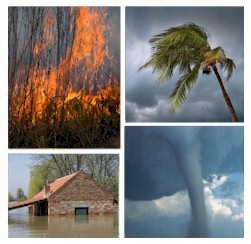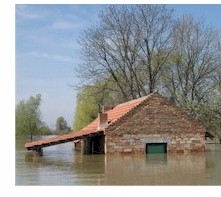|
|


Emergency Broadcast Systems
 This section of our technical library presents articles written about Emergency Alert Systems and Disaster Recovery definitions, terms and related information.
This section of our technical library presents articles written about Emergency Alert Systems and Disaster Recovery definitions, terms and related information.
The 911Broadcast emergency notification and alert service can deliver a large number of phone calls using a network of phone systems employing digital phone lines simultaneously. Should a disaster such as a snow storm, wild fire or flood hit your area, 911Broadcast systems can alert your community quickly providing specific instructions if an evacuation is required.
This service is available using our emergency broadcasting systems. If a dangerous chemical spill occurs in your community, you can target specific areas to call. If a severe snow storm hits your area, your community can be notified of school closings or event cancellations.
Predicting Floods: The Flash Factor
Reprint: www.almanac.com
FLASH FLOODS ARE the single deadliest storm-related weather hazard, killing more than 140 people every year in the United States. A mere six inches of moving water can knock you off your feet, while two feet of water will carry away most cars. As the name implies, flash floods happen suddenly, leaving little time for warning (flash floods have developed in as little as 58 seconds), and they usually occur on small streams with less than 20 square miles of drainage area. ("Regular" flooding may not occur until days or even weeks following a period of snowmelt or rain.)
To have any chance of predicting a flash flood, forecasters need to know where the "bullseye" of intense rain is -- that is, how much rain is falling, how quickly it's coming down, and how saturated the soil is. Radar and rain and stream gauges automatically convey this information via phone lines, radio waves, or satellites. "That way, the forecaster can receive [data] as the rain is falling," says Matthew Kelsch with the Forecast Systems Laboratory, based in Boulder, Colorado. However, radar is limited in its ability to detect rain in mountainous areas. In addition, the father away you get from the radar, the less accurate the information.
Another big unknown: How will the water behave once it's on the ground? "Flash floods don't always happen in the natural stream channel," says Kelsch. To address this, land surface characteristics such as terrain are now included in computer models along with data from radar and gauges, resulting in better predictions about how a certain location will handle a given amount of water.
FOR THE RECORD
Forecast: Heavy rain, possible flooding
Fact: Thousands of campers in Colorado's narrow Big Thompson Canyon ignored warnings of flooding on July 31, 1976, with tragic results. Twelve inches of rain fell in five hours, making the river rise with astonishing speed. A 19-foot wall of water killed 139 people, as it swept away boulders, cars, bridges, even a restaurant with the diners still inside.
Floods - Emergency Dialer For Flood Warnings
 Should a flash flood threaten your community, our phone services could help warn your neighborhoods of this disaster. With our emergency notification phone service, you can broadcast warning messages to thousands of households in your community warning of catastrophic disasters including flash floods.
Should a flash flood threaten your community, our phone services could help warn your neighborhoods of this disaster. With our emergency notification phone service, you can broadcast warning messages to thousands of households in your community warning of catastrophic disasters including flash floods.
Messages can be simultaneously delivered in just minutes using our network of phone systems and services. Pre-recorded warning messages can be played giving households information regarding the flood location and whether a community evacuation is planned or necessary. You can send a broadcast warning to specific neighborhoods or communities in the event of a flash flood and provide priority delivery of these messages to those nearest the flood danger.
Multiple messages can be delivered to different members of the community based upon proximity to the flood.
Calls can be directed to operators that are standing by to handle special individual emergencies.
Messages can also be broadcast seeking volunteers or special assistance from emergency personnel.
|




 This section of our technical library presents articles written about Emergency Alert Systems and Disaster Recovery definitions, terms and related information.
This section of our technical library presents articles written about Emergency Alert Systems and Disaster Recovery definitions, terms and related information.
 Should a flash flood threaten your community, our phone services could help warn your neighborhoods of this disaster. With our emergency notification phone service, you can broadcast warning messages to thousands of households in your community warning of catastrophic disasters including flash floods.
Should a flash flood threaten your community, our phone services could help warn your neighborhoods of this disaster. With our emergency notification phone service, you can broadcast warning messages to thousands of households in your community warning of catastrophic disasters including flash floods.